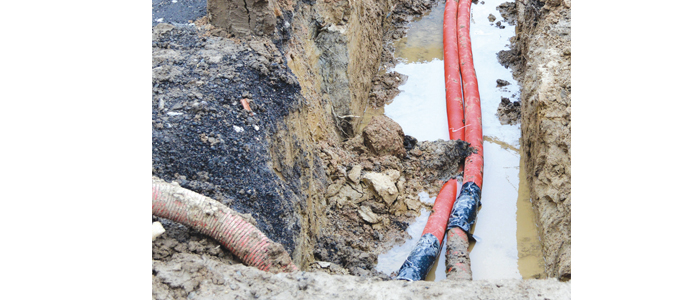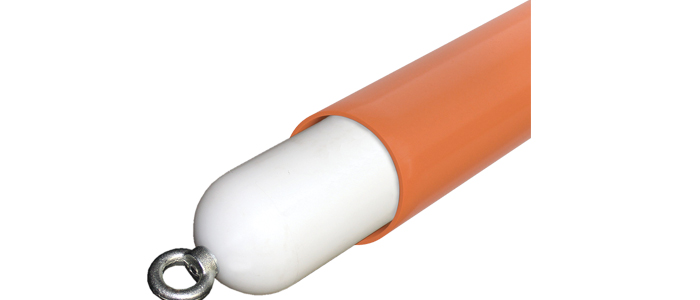- +61 7 3374 2877
- Email Us
Cable hauling is a crucial part in the overall process of the installation and commissioning of communication, power, and utility cables. To ensure a smooth and efficient cable installation, it is essential to use the right tools and equipment that are fit for purpose. We will discuss the benefits of utilising Conduit Proving & Cleaning Equipment and the different types of Cable Rollers, Guides and Feeding sheaves in the cable installation process and why these items play a role in successful cable pulls.
Utilising quality cable hauling equipment offers numerous benefits for a successful cable installation process. The right equipment improves job site efficiency, eliminates cable damage, mitigates high Coefficients of Friction, and enhances overall safety outcomes. Simplifying the installation process with the right equipment in the right locations reduces setup time, labour costs and drives profitability benefit for cable hauling contractors.
Conduit Proving & Cleaning Equipment
Proper installation of conduits is essential for successful cable installation projects. Conduit proving and cleaning equipment play a crucial role in ensuring that conduits are free of debris, obstructions, and contaminants before cable installation. This step in the cable installation process reduces the potential to see an increase in the Coefficient of friction, thus reducing the risk of cable damage and improving safety and the efficiency of cable pulling.
Proving Mandrels
Proving mandrels, also known as conduit pigs, are cylindrical devices used to verify the integrity and cleanliness of conduits before cable installation. They are made of HDPE and are sized to typically 80-90% of the conduit inner wall providing a verification that no damage has occurred during any stage of the conduit install up to the backfilling of the conduit. When pulled through the conduit, proving mandrels dislodge and remove debris, identify obstructions, and ensure that the conduit is free of damage. Proving mandrels are essential for providing a conduit route verification and preventing cable damage during installation and ensuring efficient cable pulling.

Wire Brushes
Wire brushes are used to clean the interior walls of conduits, removing dirt and mud, rocks, rust/scale, and other contaminants that may cause increased pulling friction or damage to the cable sheath during install. These brushes are made of steel or stainless-steel bristles and are attached to a flexible shaft or rod that can be pulled through the conduit. Wire brushes are available in various sizes to accommodate different conduit diameters and can be used in conjunction with other cleaning equipment, such as rubber cleaners or lubricant spreaders, for a thorough conduit cleaning process.
Rubber Cleaners
Rubber cleaners, also known as conduit squeegees, are flexible cleaning devices designed to remove dirt, water and other debris from the interior of conduits, left in the conduit this material is known to cause increase to the cable pulls coefficient of friction. They are made of rubber and are sized to fit snugly within the conduit. Rubber cleaners can be pulled through the conduit using a rope or rodder, effectively wiping the conduit walls and removing debris. Rubber cleaners are often used in combination with wire brushes or proving mandrels to ensure the conduit is thoroughly cleaned.
Lubricant Spreaders
Lubricant spreaders, sometimes referred to as lubricant applicators or conduit lubricators, are devices used to apply cable pulling lubricant evenly throughout the interior of conduits. These spreaders normally consist of a soft rubber material attached to a shaft or rod. As the lubricant spreader is pulled through the conduit, it evenly distributes the lubricant along the conduit walls, reducing the coefficient of friction and in turn lowering the tension on the cable pull. This in combination with lubricating the cable means that you have a higher success rate of lowering your Coefficient of Friction. Lubricant spreaders are available in various sizes to accommodate different conduit diameters and can be used in conjunction with cleaning equipment, such as wire brushes or rubber cleaners.
